Articles De Quervain’s Tenosynovitis
This article explains what De Quervain’s Tenosynovitis is, causes, symptoms, risk factors, diagnosis and physiotherapy management.
Basic Anatomy
Your tendons connect your muscles to your bones. At the base of your thumb are the tendons which enable you open and extend your thumb.
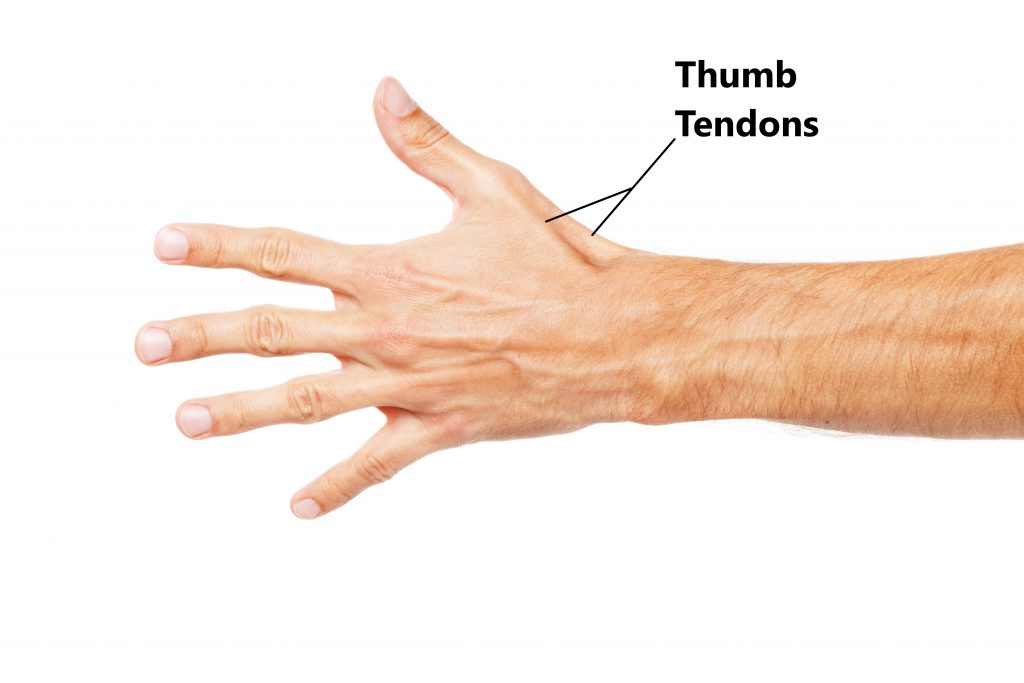
Surrounding these tendons is a slippery covering called the synovium. These structures travel underneath a fibrous tunnel called the tendon sheath which holds everything in place.

What is De Quervain’s Tenosynovitis?
In normal circumstances the thumb tendons glide freely as they pass underneath the tendon sheath. Thickening of the thumb tendons and/or tendon sheath results in narrowing of the tunnel. Friction between these structures give rise to inflammation and pain, this is know as De Quervain’s Tenosynovitis.
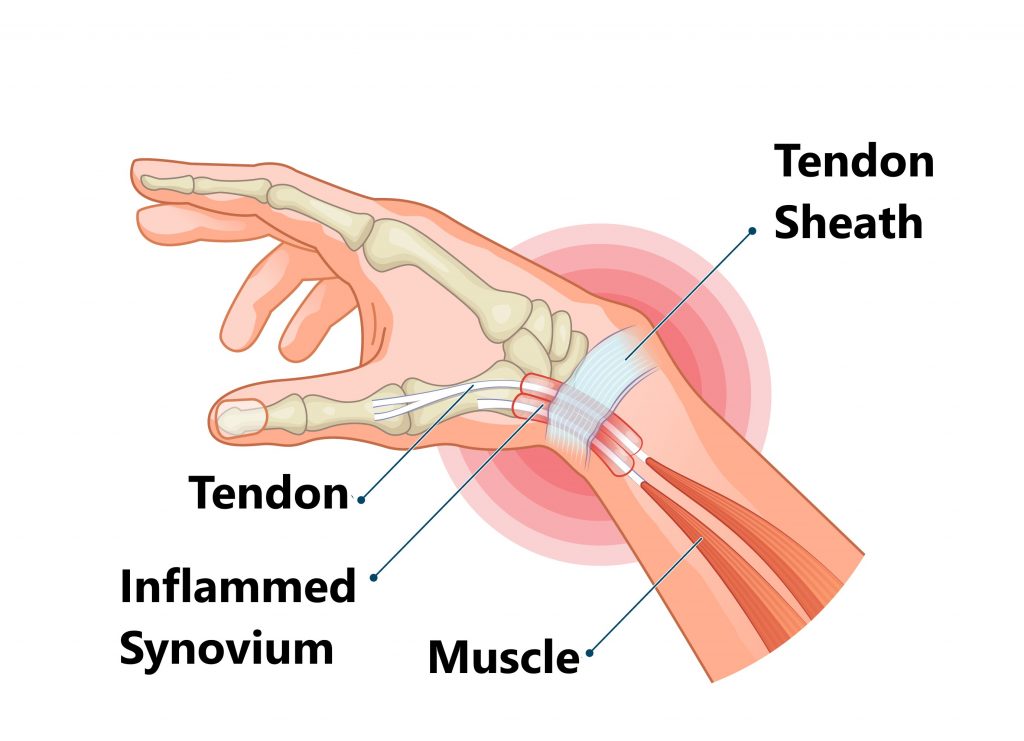
Causes
- Overuse, repetitive use of the hands (i.e. gripping, pinching, lifting and squeezing) over prolonged periods of time give rise to micro trauma and over loading of the bodies tissues.

- Trauma, excessive scarring following trauma (i.e. fracture, laceration) can result in thickening of the tendon and/or tendon sheath.
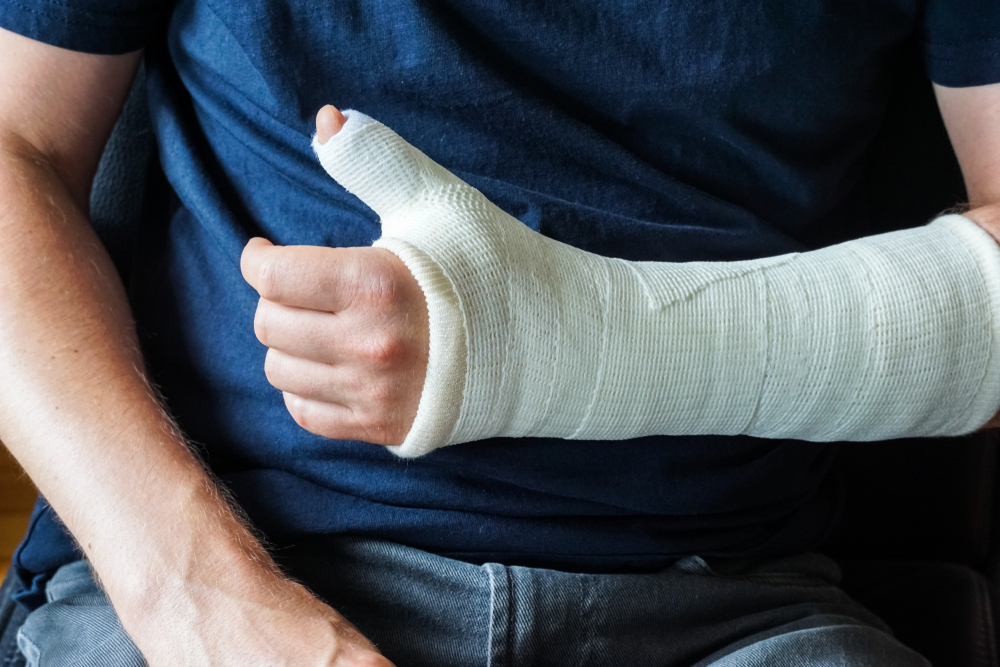
- Pregnancy, this condition commonly occurs during and after pregnancy. This due to a combination of hormonal changes (causing fluid retention) and overuse from nursing a new born (i.e. breast feeding, carrying).

- Inflammatory Arthritic Conditions, conditions such as rheumatoid arthritis cause wide spread inflammation of the joints through out your body. This often affects the wrist and hands giving rise to De Quervain’s Tenosynovitis.
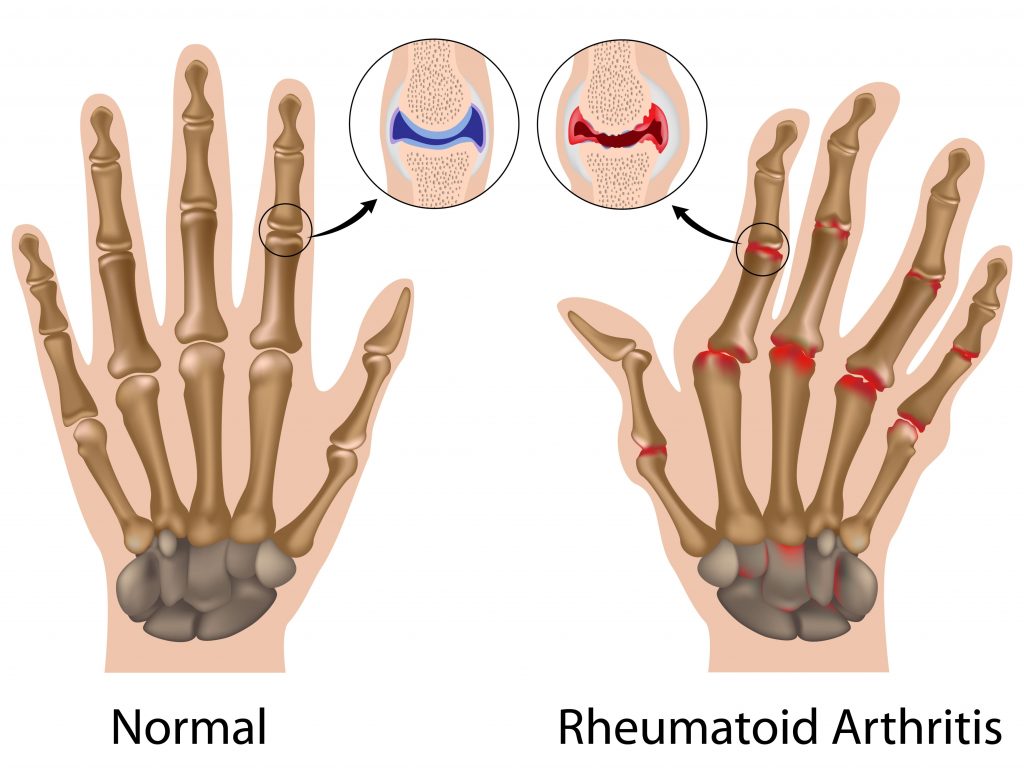
Symptoms
- pain and swelling over the base of the thumb and thumb side of the forearm
- pain with thumb, wrist and hands movements
- snapping sensation when moving thumb
- weakness with gripping
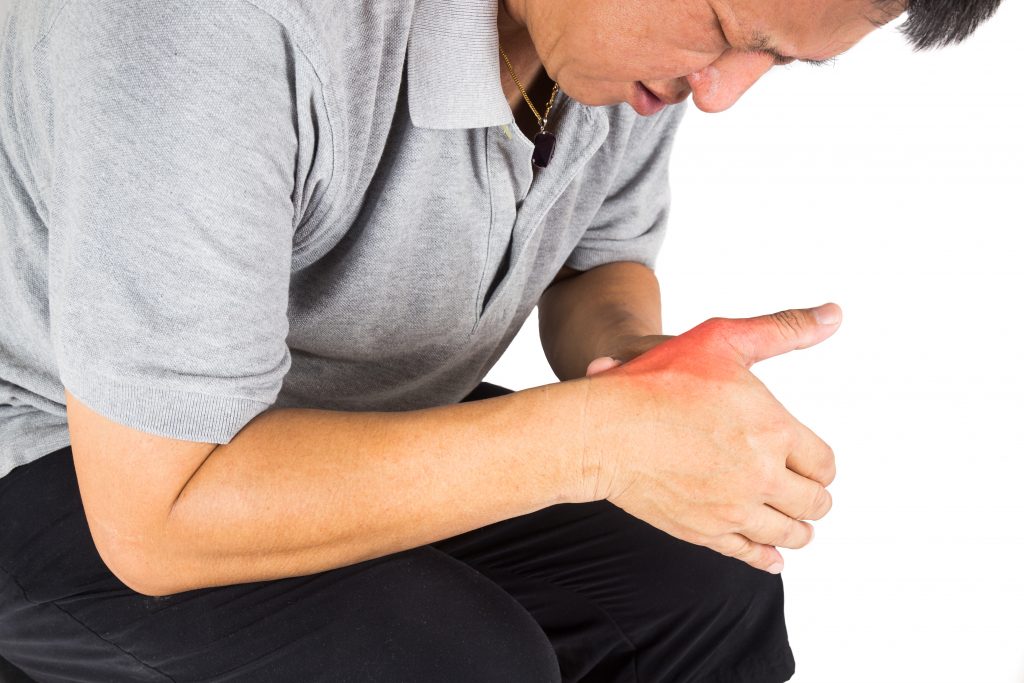
Diagnosis
Diagnosing this condition is mainly based on an individual’s clinical presentation through a thorough subjective and physical examination (a quick diagnostic test has been detailed below). An xray or ultrasound may also be required to exclude/identify other injuries.
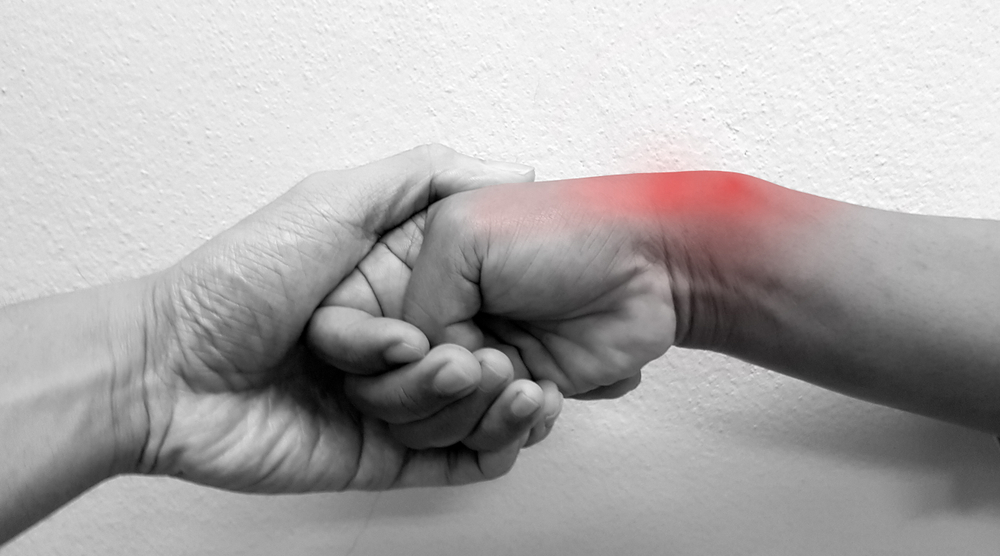
1. grasp thumb with fingers
2. while holding onto thumb move wrist in a downwards motion as if you are pouring a cup of tea
3. a positive test will reproduce pain over the base of the thumb during this movement
Risk Factors
- engaging in occupations, sports and activities involving repetitive gripping
- 30-50 years of age
- pregnancy
- female gender
- typically affects dominant hand

Management
This condition is typically managed with conservative physiotherapy treatment. Oral/topical anti inflammatory medications may also be used to alleviate excessive inflammation. For more persistent symptoms, a localised steroid injection may be required.
In rare circumstances where your symptoms are severe and not improving after >6 months of conservative treatment, surgical intervention may be required to release the tendons.
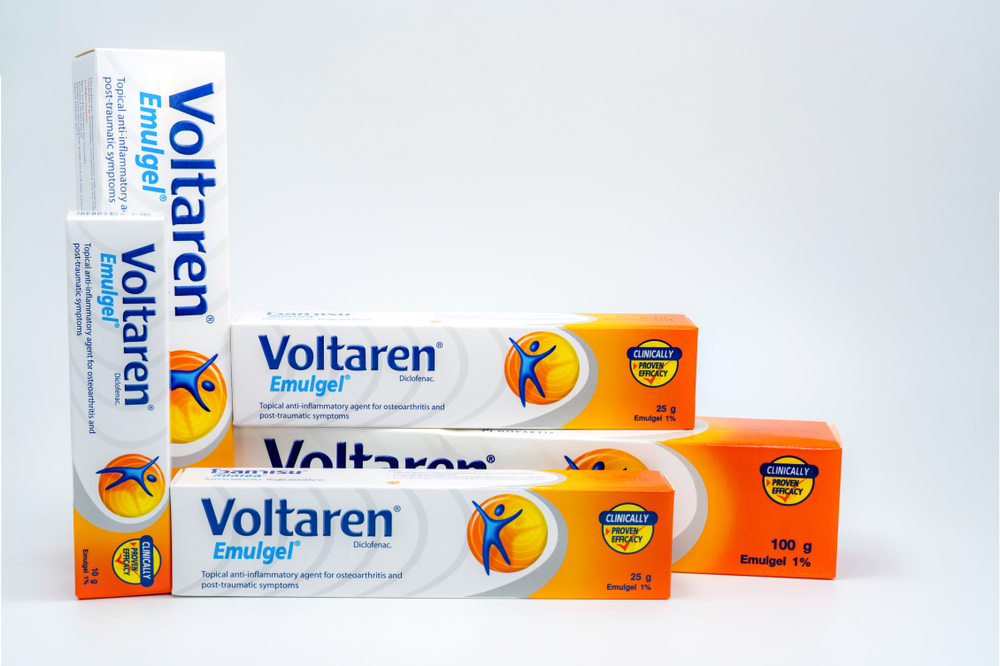
Physiotherapy Management
- Following an acute injury our priority is to minimise the extent of damage, reduce inflammation and decrease pain. Modalities such as RICE (Rest, Ice, Compression, Elevation), strapping, splinting and manual therapy may be used
- Provide education, address unhelpful beliefs regarding the injury, identify and modify aggravating factors (i.e. poor wrist posture, lifting techniques)
- Restore pain free wrist and thumb range of motion
- Strengthen the muscles of the thumb, wrist and upper limbs
- Identify and address movement and postural issues that may have contributed to the injury (i.e. stooped posture, poor positioning of the shoulder blades)
- Graded return to work, sport and function
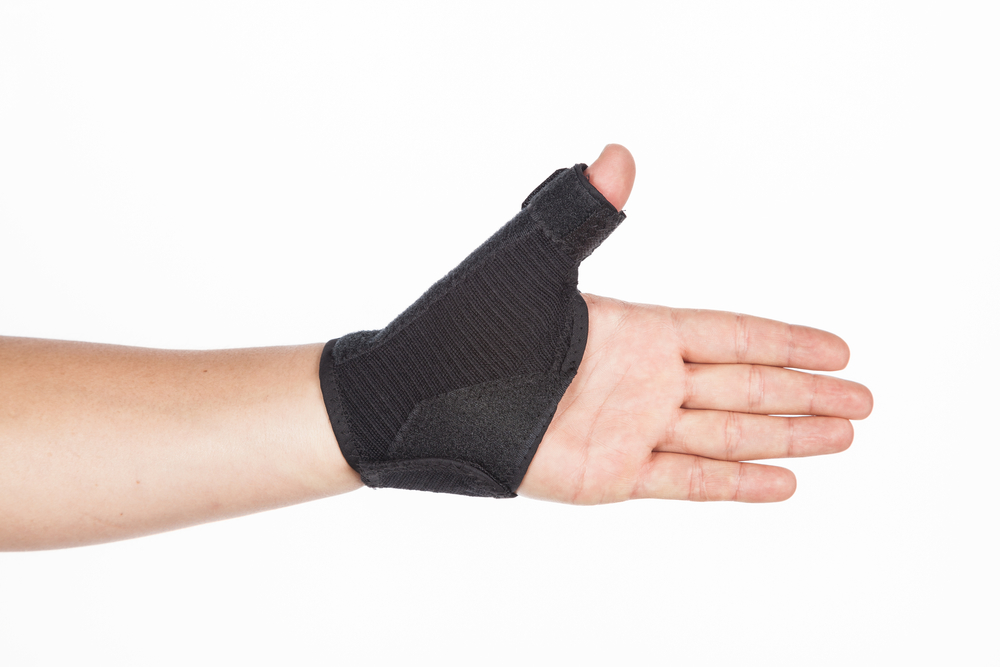
Please keep in mind the information provided is general in nature and should not be used as a substitute to consult your treating health professional. If you have any specific questions or require assistance with your individual treatment requirements please do not hesitate to contact My Family Physio, Pittwater Place Shopping Centre, Mona Vale.